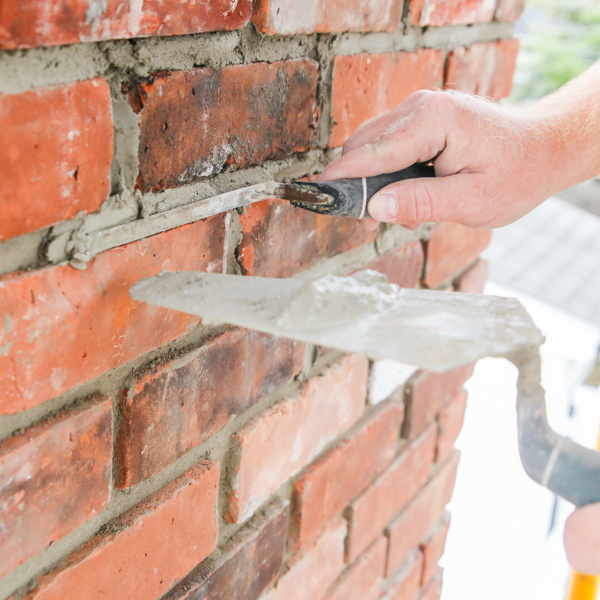Expert Siding Contractor Services to Boost Curb Charm
Expert Siding Contractor Services to Boost Curb Charm
Blog Article
Opening the Secrets of Lasting Stonework Construction Practices for Eco-Friendly Structures
Among the myriad techniques to eco-friendly structure, lasting stonework building stands out as a time-tested and resilient method that holds a riches of untapped potential. From the selection of materials to cutting-edge building and construction techniques, the secrets to accomplishing sustainability within masonry building are diverse and intriguing.
Advantages of Sustainable Masonry Building
Welcoming lasting stonework building and construction methods not just lowers environmental influence but also offers lasting economic benefits to contractors and neighborhoods. By utilizing materials like recycled bricks, obstructs, and stones, contractors can significantly reduce the carbon impact of their jobs while advertising resource performance. Additionally, sustainable masonry construction methods, such as appropriate insulation and thermal mass residential or commercial properties, can improve energy performance within structures, leading to reduced operational prices with time.
Furthermore, the sturdiness and durability of stonework structures add to lasting economic benefits. Structures built making use of sustainable masonry practices often need less repair and maintenance, translating to cost financial savings for building contractors and home owners. The long life of stonework materials also makes certain that frameworks stay steady and safe, reducing the need for constant renovations or substitutes.
Eco-Friendly Stonework Products
Utilizing eco-friendly masonry materials is a pivotal action towards enhancing the sustainability of building practices and lessening ecological effect while taking full advantage of long-lasting economic advantages. Sustainable stonework products are sourced, created, and used in a manner that decreases total ecological impact. Lasting concrete obstructs integrate recycled accumulations and may include enhanced insulation homes, contributing to energy effectiveness in buildings.
Furthermore, natural products like adobe, rammed planet, and straw bales supply exceptional thermal mass homes, lowering the requirement for heating and cooling power. These products are usually in your area readily available, promoting regional economies and lowering transportation-related carbon emissions. By choosing environment-friendly stonework materials, building projects can considerably minimize their ecological impact and add to the development of healthier, more lasting built settings.
Energy-Efficient Masonry Strategies
Power performance plays a critical role in improving the sustainability of masonry construction practices. By applying energy-efficient masonry techniques, builders can significantly minimize the general power usage of a structure, bring about reduced functional expenses and a smaller environmental footprint. One essential energy-efficient masonry method is the usage of thermal mass, which involves incorporating thick products like concrete or block into the building's structure to soak up and keep warmth. This aids regulate indoor temperatures, reducing the need for mechanical heating go now and cooling down systems.

Innovations in Lasting Masonry
Recent improvements in lasting stonework practices have actually brought about ingenious strategies that are reshaping the building and construction market. One such advancement is the growth of self-healing concrete, which makes use of germs embedded within the concrete to heal cracks autonomously. This advancement not just decreases maintenance prices yet likewise improves the sturdiness of masonry structures, adding to their sustainability.
One more notable development is making use of recycled aggregates in masonry building and construction - masonry contractor. By incorporating products such as crushed ceramic waste or recycled glass right into concrete blends, builders can minimize the ecological influence of building tasks while maintaining architectural integrity. This practice not only diverts waste from garbage dumps but additionally saves natural deposits, making it an essential development in sustainable stonework building
Moreover, the important link integration of digital layout tools, such as Building Info Modeling (BIM), is revolutionizing the way stonework frameworks are intended and built. BIM permits more exact estimations, minimized material wastefulness, and boosted power performance, eventually leading to even more sustainable building methods. These technologies collectively represent an appealing future for sustainable stonework construction in the age of environmentally friendly buildings.
Future Trends in Masonry Sustainability
With the ingenious strides made in lasting masonry methods, the future patterns in stonework sustainability are poised to more change the construction sector. One of the crucial patterns shaping the future of masonry sustainability is the raised integration of technology. Advancements such as Structure Details Modeling (BIM) and virtual fact simulations are being utilized to maximize stonework building and construction procedures, resulting in lowered material waste and enhanced energy effectiveness in custom concrete stamps structures.
In addition, the development of unique sustainable materials is set to play a substantial duty in improving the eco-friendliness of stonework building and construction. masonry contractor. Innovations like self-healing concrete, recycled accumulations, and bio-based binders are obtaining traction for their capability to decrease environmental impact while maintaining structural stability

Conclusion
To conclude, lasting masonry building and construction techniques supply various advantages for eco-friendly buildings. By using environment-friendly materials and energy-efficient methods, masonry can add to a much more sustainable constructed setting. Innovations in sustainable stonework are continually being created to further improve the ecological efficiency of structures. Looking towards the future, the trend of masonry sustainability is expected to grow, resulting in even more ecologically pleasant and energy-efficient building methods in the years to come.
Report this page